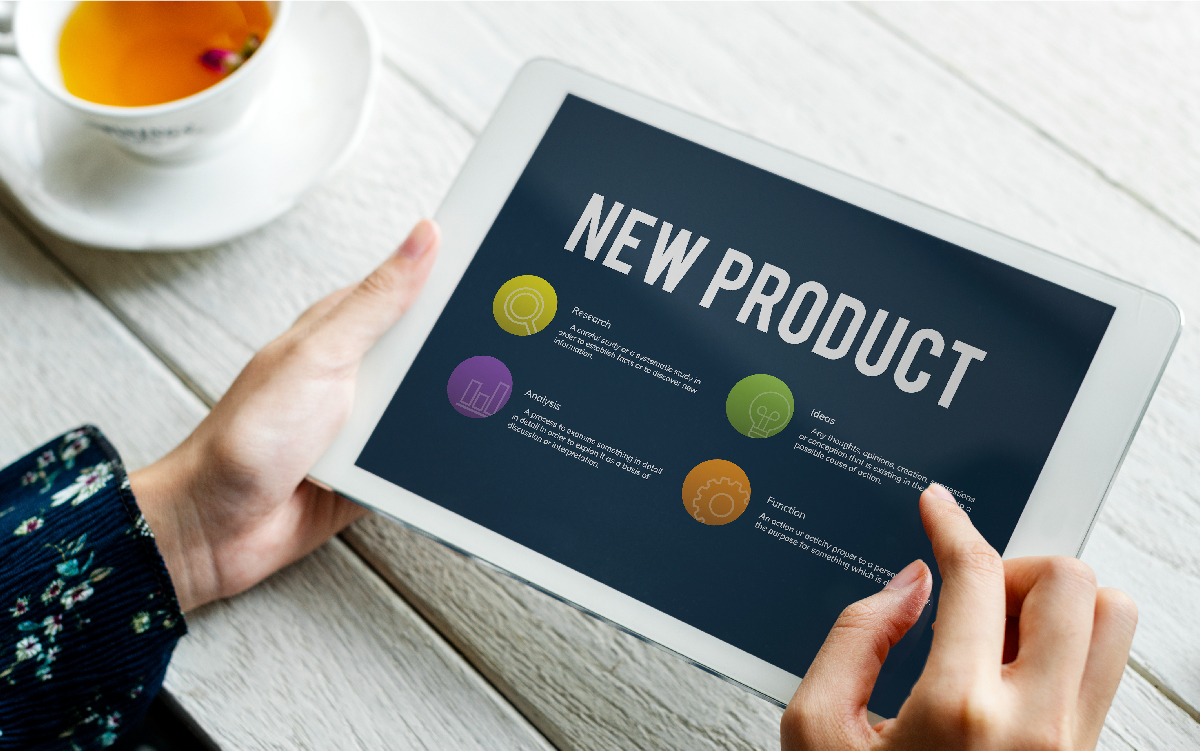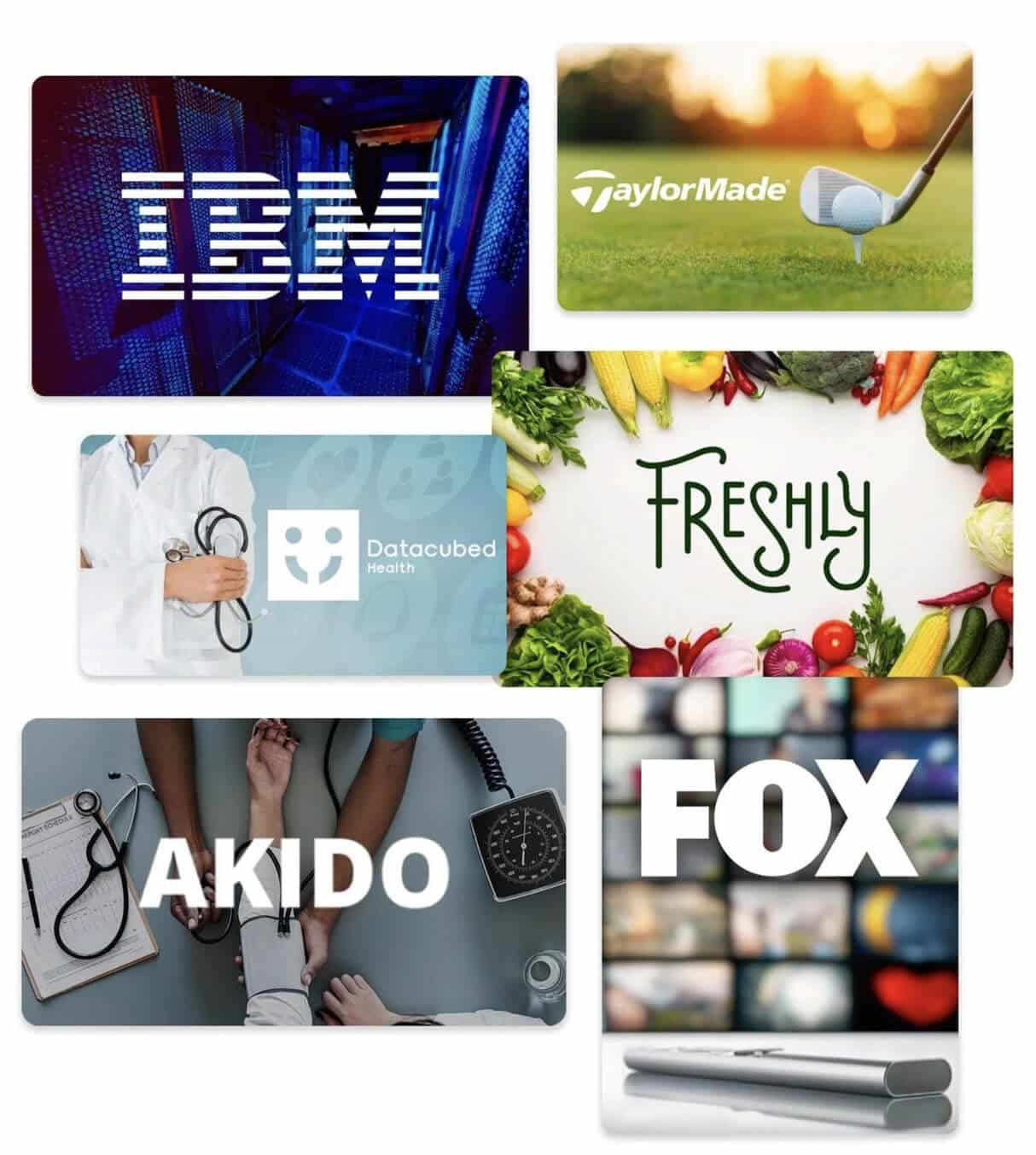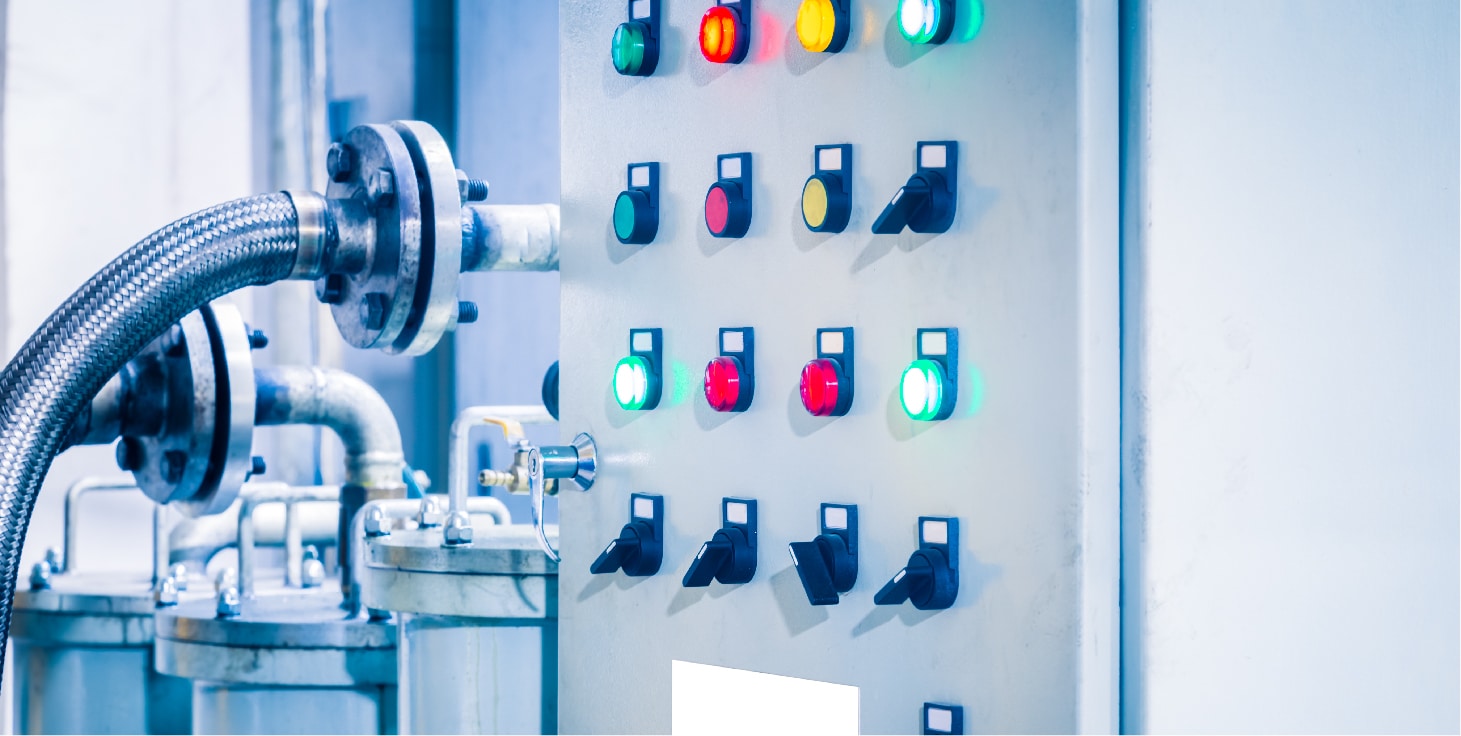Product Development
From Concept to Market Success: Navigating the Path of Effective Product Development

Everything you need to know about
Product Development
Product development is creating and bringing new products to the market. It is a critical function for businesses of all sizes, allowing them to stay competitive and grow their market share. The process of product development is complex and can involve various activities, including market research, design, prototyping, testing, and manufacturing the product.
This article will examine the product development process, the stages involved, and some best practices for successful product development.
The Product Development Process
The product development process can be broken down into several stages, each essential in bringing a new product to market.
Idea Generation
The first stage of product development is idea generation. This involves developing new product ideas that could be successful in the market. Ideas can come from various sources, including customer feedback, market research, and brainstorming sessions.
Market Research
Once a potential product idea has been identified, the next step is to conduct market research product. This involves analyzing the market to determine whether there is a demand for the product and any similar existing products. Market research can also help identify essential customer needs and preferences, which can inform the design and development of the product.
Concept Development
After market research has been conducted, the next stage is concept development. This involves creating a complex product concept, including its features, design, and functionality. During this stage, it’s essential to consider factors such as manufacturing feasibility, target market, and potential pricing (1).
“When you eventually approach manufacturers or start looking for materials, if you don’t have a concrete idea of your product’s design and how it will function, it’s easy to get lost in the subsequent steps.”
– Shopify
Our Executive Team

Common Industries we provide Product Development Services:
Healthcare & Life Sciences
SaaS & Information Services
Manufacturing
Financial Services & FinTech
Retail & E-Commerce
Insurance
Logistics & Automotive
Travel & Hospitality
Prototyping
in Product Development
Once the concept of the product has been developed, the next step is to create a prototype. A prototype is a physical model of the product that can be tested and refined. Prototyping can help identify design flaws or manufacturing issues that must be addressed before the product can be marketed.
Testing
After a prototype has been created, the next step is testing. Testing involves evaluating the product to ensure that it meets the required quality and functionality standards. This can involve various tests, including durability, usability, and safety.
Manufacturing
Once the product has been tested and refined, the next step is manufacturing. This involves setting up production processes and creating the final product. Manufacturing can involve various product activities, including sourcing materials, product assembly, and quality control.
Launch
The final stage of product development is the launch. This involves bringing the product to market and promoting it to potential customers. Launch activities can include advertising, public relations, and sales promotions.


Common Industries we provide Technology in Healthcare Services:

COST-EFFECTIVE DEVELOPERS
Our Software Developers and Engineers cost
on average $45 to $65 per hour

HIGHEST QUALITY DEDICATED TEAMS
Access to the TOP 1% of Nearshore Software Development resources in Latin America

TIME SENSITIVE DEVELOPMENT
Sonatafy’s Nearshore Talent Acquisition can place qualified Software Engineering teams in as quick as 2 weeks
Best Practices
for Product Development
Product development can be a complex and challenging process. Here are some best practices to keep in mind when developing new products:
Focus on Customer Needs
One of the most important things to remember during product development is the needs and preferences of your target customers. Understanding customer needs can help inform the design and functionality of the product and ensure that it meets their requirements.
Use Agile Development Methodologies
Agile development methodologies, such as Scrum and Kanban, can be very effective for product development. These methodologies prioritize flexibility and adaptability, which can help teams respond quickly to changing customer product needs and market conditions.
Foster Collaboration and Communication
Collaboration and communication are critical for successful product development. Teams should be encouraged to collaborate, share ideas, and communicate regularly to ensure everyone is on the same page (2).
“Collaborative product development (collaborative product design) (CPD) is a business strategy, work process and collection of software applications that facilitates different organizations to work together on the development of a product.”
– Wikipedia

Interested In Working With Sonatafy?
Test Early and Often
in Product Development:
Testing is essential to product development, and it’s important to test early and often. This can help identify design flaws or manufacturing issues before they become more serious problems.
Use Data to Inform Decision-Making
Data can be a powerful tool for informing decision-making during product development. By collecting and analyzing data on customer needs, market trends, and product performance, teams can make more informed decisions about product design, pricing, and marketing.
Consider Sustainability and Ethical Considerations
As consumers become increasingly conscious of environmental and social issues, businesses must consider sustainability and ethical considerations during product development. This includes using sustainable materials, reducing waste, and ensuring products are produced ethically.
Embrace Innovation
Product development is all about innovation, and businesses that embrace new ideas and technologies are more likely to be successful in the market. By encouraging creativity and experimentation, teams can develop new products that meet customer needs and stand out from competitors.
Challenges in Product Development
While product development can be a rewarding process, there are also several challenges that businesses may face. Some of the most common challenges in product development include:
Limited Resources
Product development can require significant time, money, and resources. This can be a major challenge for smaller businesses or startups, as they may need more resources available for product development.
Changing Customer Needs
Customer needs and preferences can constantly change, making it difficult for businesses to keep up with the latest trends and develop products that meet customer needs.
Competition
Competition is a significant challenge for businesses in product development, as they need to develop products that stand out from competitors and offer unique value to customers.
Manufacturing Challenges
Manufacturing can be a complex and challenging process. Businesses may face various challenges during this stage of product development, including quality control issues, supply chain disruptions, and production delays.
%
TOP NEARSHORE TALENT
%
ATTRITION RATE
%
ENGLISH PROFICIENCY
RESOURCES DEPLOYED
Regulatory and Legal Issues
in Product Development
Regulatory and legal issues can also challenge businesses in product development. Depending on the product and the market, companies may need to comply with various regulations and laws, which can be time-consuming and expensive.
Product development is critical for businesses of all sizes, as it allows them to stay competitive and grow their market share. By following best practices such as focusing on customer needs, using agile methodologies, and embracing innovation, businesses can increase their chances of success in product development. While there are certainly challenges involved, companies that can overcome these challenges and develop successful products can reap significant rewards in terms of growth and profitability.
Product development is the process of creating and bringing new products to market. It involves identifying customer needs, researching market trends, designing and prototyping products, testing and refining them, and ultimately launching them to the market. Product development can apply to various industries and products, from consumer goods to software and technology.
Product development typically begins with identifying customer needs and researching market trends. This involves gathering data on customer preferences, pain points, and unmet needs and analyzing market trends and the competitive landscape. This information can help businesses identify gaps in the market and opportunities for new products.
Once customer needs have been identified, the next step is to design and prototype the product. This can involve creating sketches, 3D models, and mockups to bring the product to life. During this phase, testing the product with potential customers and gathering feedback on its design and functionality is essential.
Once the product has been refined and tested, it’s time to prepare it for launch. This involves creating a marketing strategy, setting a price point, and preparing the product for manufacturing and distribution. Staying agile and being open to making changes based on customer feedback and market trends is essential throughout the product development process, as well as the software development process (https://sonatafy.com/software-development-process-a-guide-for-beginners/).
Product development is a complex and iterative process requiring various skills and expertise, from market research and design to manufacturing and marketing. By following best practices and staying focused on customer needs, businesses can successfully bring new products to market and grow their business.
What is Product Development?
Product development is the process of creating and bringing new products to market. It involves identifying customer needs, researching market trends, designing and prototyping products, testing and refining them, and ultimately launching them to the market. Product development can apply to various industries and products, from consumer goods to software and technology. This is different when comparing product development vs application development vs software development. Click to find out more.
Standard Stages of Progress in Product Development
There are typically six standard stages of progress in product development. These include idea generation, product definition, prototyping, initial design, validation and testing, and commercialization. Each set is critical to the product’s success. Businesses must carefully manage each step to ensure that the product meets customer needs and is successful in the market.
Product Development is Not Product Management
While product development and management are related, they are not the same. Product development is focused on creating new products and bringing them to market. In contrast, product management is focused on managing existing products and ensuring their ongoing success. Product management involves tracking product performance, managing product portfolios, and making strategic product development and marketing decisions.
How to Create a Product Development Plan in 3 Steps
Creating a product development plan involves three key steps: defining the product vision, creating a product roadmap, and executing the plan. The first step is to determine the product vision, which involves identifying the key features and benefits of the product, as well as the target market and customer needs. The second step is to create a product roadmap, which outlines the key milestones and deliverables for the product development process. Finally, the third step is to execute the plan, which involves managing the product development process, testing and refining the product, and ultimately launching it to the market.
How Do Product Roadmaps Fit Into Product Development?
Product roadmaps are critical for product development, as they help businesses plan and manage the product development process. A product roadmap outlines the key milestones and deliverables for the product development process, including design, testing, and launch. It also helps businesses to prioritize tasks and allocate resources effectively, ensuring that the product development process is efficient and effective.
What is Agile Product Development?
Agile product development is a methodology that emphasizes flexibility and adaptability in the product development process. This approach involves breaking the product development process into more miniature, manageable stages and allowing teams to adapt and make changes based on customer feedback and market trends. This approach helps businesses to develop products that are more responsive to customer needs and better suited to the changing market (3).
“The Agile methodology is an iterative approach to project management that focuses on breaking down projects into smaller, more manageable tasks.”
– Maze
A More Literal Definition of Product Development
A more literal definition of product development is taking a product from concept to market. This involves identifying customer needs, designing and prototyping the product, testing and refining it, and ultimately launching it to the market.
This process can be complex and iterative, requiring a range of skills and
expertise from market research and design to manufacturing and marketing.
Takeaways: Where the Magic Happens in Agile
The key takeaways for agile product development are that it is a flexible and adaptive approach that allows teams to respond quickly to customer needs and market trends. The magic of agile happens in the collaboration between team members, who work together to create a product that meets customer needs and is successful in the market.
By breaking the product development process into miniature, manageable stages and allowing teams to adapt and make changes as needed, businesses can develop products more responsive to customer needs and better suited to the changing market.
Who is involved in the product development process?
The product development process involves a range of stakeholders, including product managers, designers, engineers, marketers, and sales teams. Each stakeholder plays a critical role in the product development process. Effective collaboration between these teams is essential to the product’s success.
What are the stages of product development?
As previously mentioned, there are typically six standard stages of progress in product development. These include:
- Idea generation (Ideation): This stage involves identifying customer needs and market trends, brainstorming ideas for new products, and evaluating the feasibility of these ideas.
- Product definition: Once an idea is chosen, the product definition stage involves further defining the product, identifying the key features and benefits, and creating a product roadmap.
- Prototyping: The prototyping stage involves creating a working model or prototype of the product, which can be tested and refined.
- Initial design: Once the prototype is developed, the initial design stage involves refining the product design, considering factors such as usability, manufacturability, and cost.
- Validation and testing: In this stage, the product is tested and validated to ensure that it meets customer needs and is suitable for the market.
- Commercialization: The final stage of product development involves launching the product to the market, marketing and promoting the product, and managing ongoing sales and customer support.
What are some common early-stage product development frameworks?
Several common early-stage product development frameworks exist, including Design Thinking, Lean Startup, and the Stage-Gate process. Each framework provides:
- A structured approach to product development.
- Focusing on different aspects of the process, such as customer needs.
- Product design.
- Market validation.
What are product development best practices?
Some critical product development best practices include:
- Focusing on customer needs and market trends: Product development should always start with a deep understanding of customer needs and market trends to ensure that the product meets a real need and has a substantial market opportunity.
- Collaborating across teams: Effective collaboration across groups, including product managers, designers, engineers, marketers, and sales teams, is essential to the product’s success.
- Adopting an iterative approach: Product development is an iterative process. Businesses should be prepared to test and refine the product based on customer feedback and market trends.
- Managing risk: Product development involves a degree of risk. Businesses should manage this risk by conducting market research and prototyping before investing in full-scale manufacturing.
- Measuring success: Product development should be measured against clear metrics and KPIs to ensure the product meets business goals and customer needs.
The 6 stages of product development
As previously mentioned, the six stages of product development are idea generation (ideation), product definition, prototyping, initial design, validation and testing, and commercialization. Each stage is critical to the product’s success, and businesses should carefully manage each stage to ensure that the product meets customer needs and is successful in the market.
Product development process examples
Examples of product development processes include Apple’s approach to developing new products, which focuses on customer needs and a commitment to design excellence, and Amazon’s approach to product development, which emphasizes agility and responsiveness to market trends.
Product Development Companies
Awards & Recognitions
Helping take our clients’ software development businesses to the next level has been quite an experience, and we are not slowing down any time soon. Providing a memorable experience and far surpassing our customers’ software development and solutions goals is one of the most rewarding experiences of our company to date.
We’re ready to start helping your company grow with our industry-leading custom software development solution, are you?

Earning Trust & Loyalty for our Software Development Services
Our executive team proudly provides complete software development services and solutions in the healthcare, SaaS, Manufacturing, and FinTech fields from deployment to completion.
Our client-centric software development solutions have made us the healthcare app development provider of choice for clients such as Akido Labs, Datacubed Health, Sema Technologies, and Semantic AI, among others. With thousands of software development engineers deployed to date, clients love our personalized high-touch approach.
With high-quality delivery web development services and strong customer support and management, we give you the ability to focus on business decisions rather than software development issues.
Sonatafy Technology services can dramatically
improve the Product Development Services.
Our Software Development Clients Have Spoken.

“We increased our productivity and quality by extending our team with Sonatafy resources. They are part of our ‘family’. Their passion, dedication, experience, and wisdom has been nothing short of impressive.”

“We have been using Sonatafy for software team augmentation. Their vetting process is extremely through and has saved us a huge amount of time. All of the candidates presented have been outstanding and have fit into our team perfectly.”

“The Sonatafy team consists of members who are dedicated, personable, and attentive. They will search tirelessly to match the right talent to meet your skills and budgetary requirements. Regardless of your situation, you cannot go wrong with Sonatafy.”

“The Sonatafy team has continually impressed us with the quality of their engineers — we have found excellent engineering leaders in their contractors who have helped tremendously. They really are an integral part of our team, and we’re very thankful for Sonatafy’s professional leadership in this space. I heartily recommend them to augment anyone’s teams or projects.”

“At IMAIGE Analytics, we are driven by purpose and outcomes. Sonatafy has been the exact type of partner we need to help us deliver on both. They’ve found solutions specific to our purpose and needs, their resources have contributed like long time team members from day one and they seem dedicated to progressively better outcomes from the start. Thanks to the team and to Steve for taking the time to make our business better!”

“The entire team at Sonatafy greatly surpassed our expectations. We require very specific skill sets and the team did an incredible job of screening and selecting top – notch candidates. Sonatafy’s attention to detail, professionalism, open communication, and collaboration with us ensured that we found highly skilled talent that fit seamlessly into our company’s culture. I can’t recommend them strongly enough.”

“Sonatafy makes it easy to find great and professional talent, with their help we have been able to solidify our team. Their process and communication is a refresher and a weight off our shoulders.”

I’ve used Sonatafy Technologies for the last 5 + years at several of my companies both small and large, in a staff augmentation capacity. I have been consistently impressed with the high – quality of technical skills as well as the team member’s high level of engagement and dedication to my projects. I’ve always considered my dedicated Sonatafy resources as members of my team , and their contributions and performance has been excellent. The combination of high performance and afford ability has been an outstanding benefit , and I would highly recommend using Sonatafy Technologies as your near shore technology partner.
Who is Part of the
Product Development Team?
The product development team typically includes a range of stakeholders, including product managers, designers, engineers, marketers, and sales teams. Each stakeholder plays a critical role in the product development process. Effective collaboration between these teams is essential to the product’s success.
The process that simplifies product development
To simplify the product development process, businesses should focus on customer needs and market trends, collaborate effectively across teams, and adopt an iterative approach. By testing and refining the product based on customer feedback and market trends, businesses can develop products more responsive to customer needs and better suited to the changing market. In addition, companies should take steps to manage risk and measure success to ensure that the product meets business goals and customer needs.
There are various models and frameworks for the product development process. The number of stages may vary depending on the specific approach. However, here are some answers to your questions based on commonly recognized stages or models of product development:
What are the five stages of product development?
The five stages of product development can include:
- Idea generation
- Concept development
- Design and prototyping
- Testing and validation
- Launch and commercialization
What are the 7 stages of product development?
The seven stages of product development can include the following:
- Idea generation
- Idea screening
- Concept development and testing
- Business analysis
- Product design
- Testing and validation
- Launch and commercialization
What are the 3 types of product development?
The three types of product development can include:
- New product development: creating an entirely new product that has not existed before in the market
- Product improvement: enhancing or upgrading an existing product
- Line extension: introducing a new variation of a current development within the same product line
What are the 4 stages of product development?
The four stages of product development can include:
- Idea generation
- Product design and development
- Testing and validation
- Launch and commercialization
It’s important to note that the number and description of product development stages may vary depending on the model or framework used. Businesses may need to tailor the product development process to their needs and goals.
What are the 5 stages of product development?
The 5 stages of product development are a commonly recognized framework for the product development process. They include:
- Idea generation: This stage involves identifying new product ideas, either by brainstorming within the company, conducting market research, or observing consumer trends.
- Concept development: In this stage, the product idea is refined and developed into a concept that defines the product’s features, target market, benefits, and competitive advantages.
- Design and prototyping: The design and prototyping phase begins once the product concept is defined. This stage involves creating a physical or digital product prototype that can be tested and refined before production.
- Testing and validation: During this stage, the product is tested to ensure it meets the required standards and specifications. This can involve various types of testing, such as usability, safety, and quality testing.
- Launch and commercialization: The product is launched and introduced to the market in the final stage. This includes developing a marketing strategy, setting pricing and distribution channels, and monitoring sales and customer feedback.
Product development definition by authors:
Product development is a process that involves creating and refining new products or improving existing ones to meet the needs of consumers and achieve business objectives. According to Philip Kotler, a leading marketing expert, product development is “designing and creating a new product or service to be sold by a business to its customers.” Similarly, Robert G. Cooper, a renowned product development expert, defines product development as “the set of activities beginning with the perception of a market opportunity and ending in the production, sale, and delivery of a product.” In both definitions, the product development process involves the following:
- Identifying market needs.
- Designing and refining the product.
- Launching it to the market.
The ultimate goal is to create a successful product that meets the needs of consumers and generates revenue for the business.
New product development:
New product development refers to the process of creating and introducing a completely new product to the market. This can involve developing an entirely new product from scratch or modifying an existing product to meet the needs of a new market or audience. New product development is critical to a company’s growth strategy, allowing it to expand its product line and capture new market opportunities. However, it can also be risky, as there is no guarantee that the new product will succeed in the market (4).
“Whether in mature businesses like automobiles and electrical appliances, or more dynamic ones like computers, managers correctly view new products as a chance to get a jump on the competition.”
– Harvard Business Review
To increase the chances of success, companies often use a structured product development process, such as the 5-stage model described above, to guide them through the process. This includes conducting market research, identifying customer needs, designing and testing the product, and launching it.
Apple’s iPhone: Apple’s iPhone is a classic example of successful product development. Apple identified a market opportunity for a device that combined a phone, internet browser, and media player into one device. The company invested heavily in research and development to create a product that was not only functional but also aesthetically pleasing. The iPhone was launched in 2007 and has since become one of the most iconic and successful products in the history of technology.
Here’s a link to Apple’s website where you can learn more about the iPhone: https://www.apple.com/iphone/
Tesla’s Model S: Tesla’s Model S is a prime example of successful product development in the automotive industry. Tesla identified a market opportunity for an electric car that could compete with gasoline-powered vehicles in terms of performance and range. The company invested heavily in research and development to create a vehicle that was not only electric but also luxurious and high-performing. The Model S was launched in 2012 and has since become one of the most popular electric vehicles on the market.
Here’s a link to Tesla’s website where you can learn more about the Model S: https://www.tesla.com/models
References:
- When you eventually approach manufacturers or start looking for materials, if you don’t have a concrete idea of your product’s design and how it will function, it’s easy to get lost in the subsequent steps. – Shopify Quote
https://www.shopify.com/blog/product-development-process#1 - Collaborative product development (collaborative product design) (CPD) is a business strategy, work process and collection of software applications that facilitates different organizations to work together on the development of a product. – Wikipedia Quote
https://en.wikipedia.org/wiki/Collaborative_product_development - The Agile methodology is an iterative approach to project management that focuses on breaking down projects into smaller, more manageable tasks. – Maze Quote
https://maze.co/collections/product-development/agile/ - Whether in mature businesses like automobiles and electrical appliances, or more dynamic ones like computers, managers correctly view new products as a chance to get a jump on the competition. – Harvard Business Review Quote
https://hbr.org/1989/05/the-new-product-development-map









